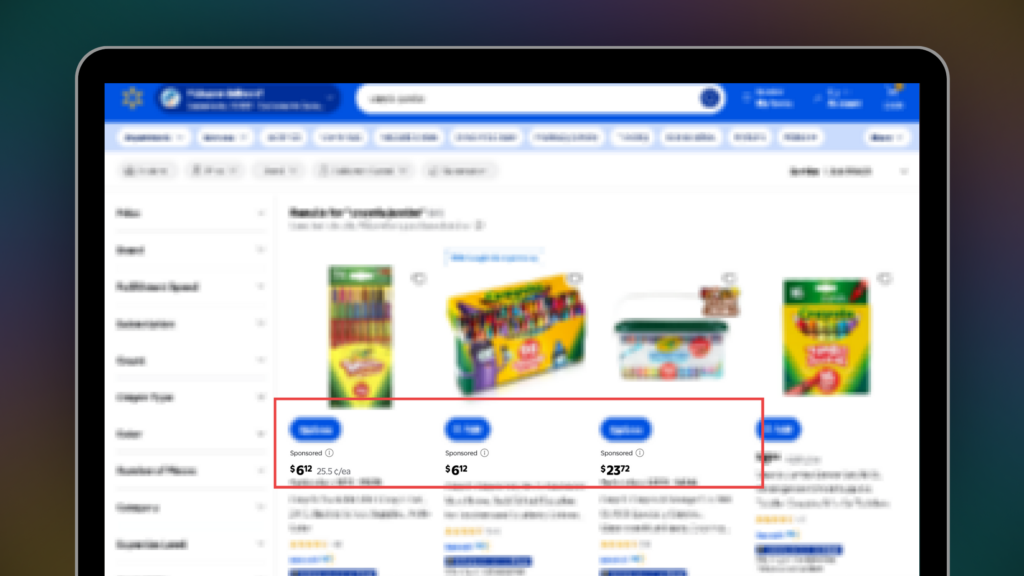- Blog
-
For Sellers
How can Amazon sellers deal with fake reviews?
Learn how to spot, report, and recover from fake reviews before they derail your Amazon sales.

Amazon blocks over 275 million suspected fake reviews annually, but some still slip through—and they can devastate honest sellers. One fraudulent review can trigger a cascade of lost rankings, reduced Buy Box ownership, and plummeting customer trust that takes months to recover from.
The good news? You have more power to fight back than you might think. Amazon provides multiple tools and reporting mechanisms to help sellers identify, report, and monitor fake reviews while building authentic defenses against review manipulation.
What are fake Amazon reviews?
Fake Amazon reviews are inauthentic customer feedback designed to mislead shoppers and manipulate product rankings. These fraudulent reviews come in several forms, from incentivized feedback purchased through review brokers to family members posting glowing testimonials.
Amazon defines fake reviews as any content that isn’t an impartial, authentic reflection of a customer’s actual experience with the product. This includes reviews written by sellers themselves, competitors posting negative feedback, or customers who received compensation in exchange for their review.
Common types of fake reviews include:
- Reviews written by sellers or their employees for their own products
- Negative reviews posted by competitors to damage sales
- Incentivized reviews where customers receive refunds, discounts, or free products
- Reviews from family members, friends, or business associates
- Content created by review broker services that sell packages of fake feedback
Amazon maintains a zero-tolerance policy toward review manipulation. The platform uses advanced AI systems to analyze reviews before publication, examining factors like account relationships, sign-in patterns, and review history to detect fraudulent content.
Why fake reviews pose serious threats to sellers
Fake reviews create an uneven playing field that punishes honest sellers while rewarding those willing to break Amazon’s rules. When competitors use fake positive reviews to boost their rankings or fake negative reviews to damage yours, your legitimate business suffers real consequences.
Amazon’s algorithm treats all reviews as equal when calculating rankings and Buy Box eligibility. A sudden influx of negative fake reviews can tank your product’s visibility, pushing it down in search results where customers are less likely to find it. Meanwhile, competitors gaming the system with fake positive reviews climb higher in rankings.
The financial impact extends beyond lost sales. Amazon’s enforcement actions against review manipulation can result in immediate account suspension, frozen funds, and permanent product delisting. The platform has pursued legal action against sellers engaged in review fraud, including lawsuits and referrals to criminal enforcement authorities.
Amazon’s enforcement actions include:
- Immediate suspension of selling privileges
- Withholding of funds and payments
- Removal of all product reviews
- Permanent product delisting
- Legal action and public disclosure of seller information
Customer trust erosion might be the most damaging long-term consequence. Shoppers who discover fake reviews lose confidence in your brand, leading to reduced conversion rates and negative word-of-mouth that spreads beyond Amazon’s platform.
How to identify fake reviews on your listings
Red flags and warning signs
Spotting fake reviews requires understanding the patterns that legitimate customer feedback rarely follows. Fake reviews often share similar characteristics that become obvious once you know what to look for.
Generic language is a major red flag. Fake reviews typically use vague phrases like “great product” or “highly recommend” without specific details about the product’s features, quality, or performance. Legitimate customers mention specific use cases, problems they solved, or comparisons to similar products.
Timing patterns can reveal coordinated fake review campaigns. Multiple reviews posted within hours or days of each other, especially from accounts with limited review history, suggest artificial manipulation. Genuine reviews typically arrive gradually over weeks or months.
Pattern recognition techniques
Review content analysis reveals subtle clues about authenticity. Fake reviews often focus exclusively on generic praise without mentioning specific product features, dimensions, or real-world applications. Legitimate customers discuss how the product fits their needs, any issues they encountered, and comparisons to alternatives.
Account verification provides another layer of detection. Reviews from accounts with “Verified Purchase” badges carry more weight, but even these can be manipulated through refund schemes. Look for reviewers with established purchase histories across different product categories rather than accounts that only review similar items.
Language patterns can expose fake review networks. Multiple reviews using identical phrases, similar sentence structures, or unusual grammar mistakes might indicate content created by the same source. Professional review brokers often reuse templates with minor variations.
Tools and methods for analysis
Amazon’s built-in review analytics provide your first line of defense. The Customer Reviews tool in Seller Central shows review patterns over time, helping you identify sudden spikes or unusual activity that might indicate manipulation.
Third-party tools can supplement Amazon’s native analytics. Many sellers use review monitoring services to track competitor activity and identify suspicious patterns across multiple products or brands.
Manual review auditing remains valuable despite available tools. Regularly reading your product reviews helps you understand genuine customer feedback while developing an eye for suspicious content that automated systems might miss.
What to do when you discover fake reviews
Reporting to Amazon’s official channels
Amazon provides specific mechanisms for reporting suspected fake reviews, but success depends on following their preferred reporting methods. The platform processes thousands of reports daily, so proper documentation and channel selection improve your chances of action.
Start by using the “Report” link directly under the suspicious review on your product detail page. This method connects the report to the specific review and provides Amazon’s review team with immediate context about the violation.
Document the suspicious activity before reporting. Screenshot the review content, reviewer profile information, and any patterns you’ve identified across multiple reviews. Amazon’s investigation team uses this evidence to determine appropriate action.
Using the Customer Reviews tool in Seller Central
The Customer Reviews tool offers Brand Registry participants direct access to review management features. This tool lets you track all reviews for your enrolled brands and respond to customer concerns through Amazon’s messaging system.
Access the tool by hovering over “Brands” in your Seller Central main menu, then clicking “Customer Reviews.” The interface displays reviews from the past 12 months in chronological order, with filtering options for star ratings, contact status, and time periods.
Use the reporting features within the Customer Reviews tool to flag suspicious content. This internal reporting method often receives faster review than public reporting options because it comes from verified brand owners.
Feedback Manager functionality
Feedback Manager handles seller feedback rather than product reviews, but it’s crucial for addressing misplaced comments. Customers sometimes leave product-related feedback in seller feedback sections, which you can request Amazon to remove.
Navigate to Feedback Manager through your Seller Central account to find the “Request Remove Feedback” option. Use this feature when seller feedback discusses the product itself rather than your service or fulfillment experience.
The tool also helps identify patterns in feedback that might indicate coordinated attacks on your seller account. Multiple negative feedback entries with similar language or timing deserve investigation and potential reporting.
Documentation best practices
Effective documentation strengthens your case when reporting fake reviews to Amazon. Create a systematic approach to recording suspicious activity that includes timestamps, reviewer information, and specific policy violations.
Maintain screenshots of reported reviews before Amazon potentially removes them. The review content serves as evidence if you need to escalate the issue or if similar patterns emerge later.
Track your reporting history to identify trends and measure Amazon’s response times. This information helps you understand which reporting methods work best and when to follow up on pending investigations.
Proactive monitoring strategies
Setting up review monitoring systems & regular audit schedules
Consistent monitoring catches fake reviews early, before they significantly impact your product’s performance. Establish a regular schedule for reviewing new feedback rather than waiting for problems to compound.
Daily monitoring works best for high-volume products or during competitive periods like new product launches. Check your most important products every morning to identify overnight review activity that might require immediate attention.
Weekly audits suit most established products with a steady review flow. Use this time to analyze review patterns, compare competitor activity, and document any suspicious trends for future reference.
Create monitoring checklists to ensure consistent coverage across all your products. Include steps for checking review authenticity, documenting suspicious activity, and following up on previous reports to Amazon.
Using Amazon’s Customer Reviews tool effectively
The Customer Reviews tool becomes more powerful when you understand its filtering and sorting capabilities. Use these features to focus on reviews that require immediate attention or investigation.
Filter by star rating to prioritize low-star reviews that might indicate fake negative feedback from competitors. These reviews often have the most immediate impact on your product’s conversion rates and rankings.
Sort by contact status to track which negative reviewers you’ve already reached out to through Amazon’s messaging system. This prevents duplicate outreach that could violate Amazon’s communication policies.
FeedbackWhiz Alerts integration for automated monitoring

FeedbackWhiz Alerts automates the review monitoring process by sending real-time notifications when new reviews appear on your listings. This automation ensures you never miss suspicious activity, even during busy periods.
Set up alerts for multiple criteria, including review star ratings, review content keywords, and reviewer account characteristics. The system monitors your listings 24/7 and delivers notifications via email or Slack integration.
Configure different alert thresholds for different products based on their importance to your business. High-priority products might warrant immediate alerts for any new review, while established products might only trigger alerts for reviews below three stars.
The AI-powered review summaries help you quickly assess multiple reviews without reading each one individually. This feature identifies common themes and sentiment patterns that might indicate coordinated fake review campaigns.
Building authentic review defenses
Legitimate review generation strategies
The best defense against fake reviews is a steady stream of authentic positive feedback from satisfied customers. Amazon provides several policy-compliant methods for requesting reviews that don’t involve incentives or manipulation.
Amazon’s “Request a Review” button in Seller Central sends standardized review requests to customers after their purchase. This automated system respects customer preferences and unsubscribe requests while staying within Amazon’s communication guidelines.
Policy-compliant review request methods:
- Using Amazon’s “Request a Review” button for individual orders
- Including neutral review request cards in product packaging
- Sending review requests through Buyer-Seller Messaging (once per order)
- Enrolling eligible products in Amazon’s Vine program
FeedbackWhiz Emails automates review requests while maintaining compliance with Amazon’s strict communication policies. The tool sends personalized messages that request honest feedback without attempting to influence the review’s content or sentiment.

Proper customer communication within policy guidelines
Amazon’s communication policies strictly regulate how sellers can interact with customers about reviews. Understanding these boundaries helps you request feedback effectively while avoiding policy violations that could result in account suspension.
Never offer incentives for reviews, including refunds, discounts, free products, or future benefits. Amazon considers any form of compensation for reviews as manipulation, even if you request honest feedback.
Avoid requesting review changes or removals, even when offering legitimate customer service solutions. You can address customer issues through proper channels, but linking these solutions to review modifications violates Amazon’s policies.
Compliant customer communication examples:
- “Thank you for your purchase! Feel free to share your honest feedback by leaving a review”
- “As a small business, we learn from our customers’ experiences. If you’d like, you can share your honest thoughts about the product on Amazon”
- “Please let us know how we can best assist you” (without mentioning reviews)
Creating quality products that earn genuine reviews
Authentic positive reviews flow naturally from products that exceed customer expectations. Focus on product quality, accurate descriptions, and reliable fulfillment to create experiences worth reviewing.
Invest in professional product photography and detailed descriptions that accurately represent your product’s features, dimensions, and capabilities. Customers who receive exactly what they expected are more likely to leave positive reviews.
Respond quickly to customer questions and concerns through Amazon’s messaging system. Excellent customer service often converts neutral experiences into positive reviews while preventing negative feedback.
Monitor your product reviews for genuine feedback about improvements or issues. Use this information to enhance your products and address common complaints before they generate more negative reviews.
Protect your Amazon business from review manipulation
Fake reviews represent a serious threat to honest sellers, but you’re not defenseless. Amazon provides multiple tools and reporting mechanisms to help you identify and combat review fraud while building authentic customer relationships.
The key to long-term success lies in combining vigilant monitoring with proactive, authentic review generation. Use Amazon’s reporting tools to address fake reviews when they appear, but focus most of your energy on creating products and experiences that naturally earn genuine positive feedback.
Remember that review manipulation is a continuous challenge requiring ongoing attention. Establish regular monitoring routines, understand Amazon’s policies thoroughly, and maintain detailed documentation of any suspicious activity you encounter.
Ready to protect your Amazon business with automated monitoring and compliant review generation? Try Seller 365 free for up to 14 days and get FeedbackWhiz Emails for policy-compliant review requests plus FeedbackWhiz Alerts for 24/7 monitoring—along with 8 other essential Amazon seller apps in one subscription.






















